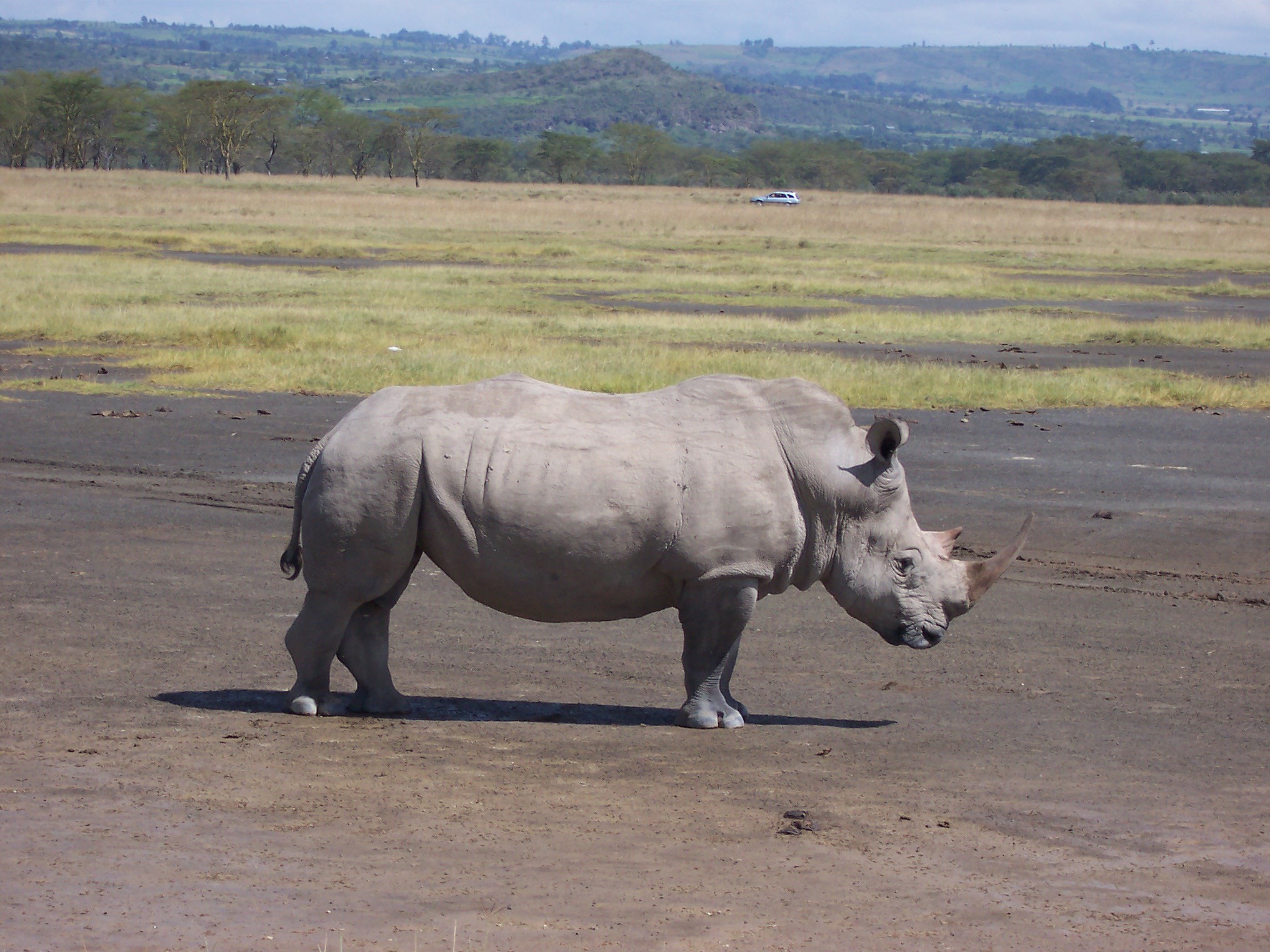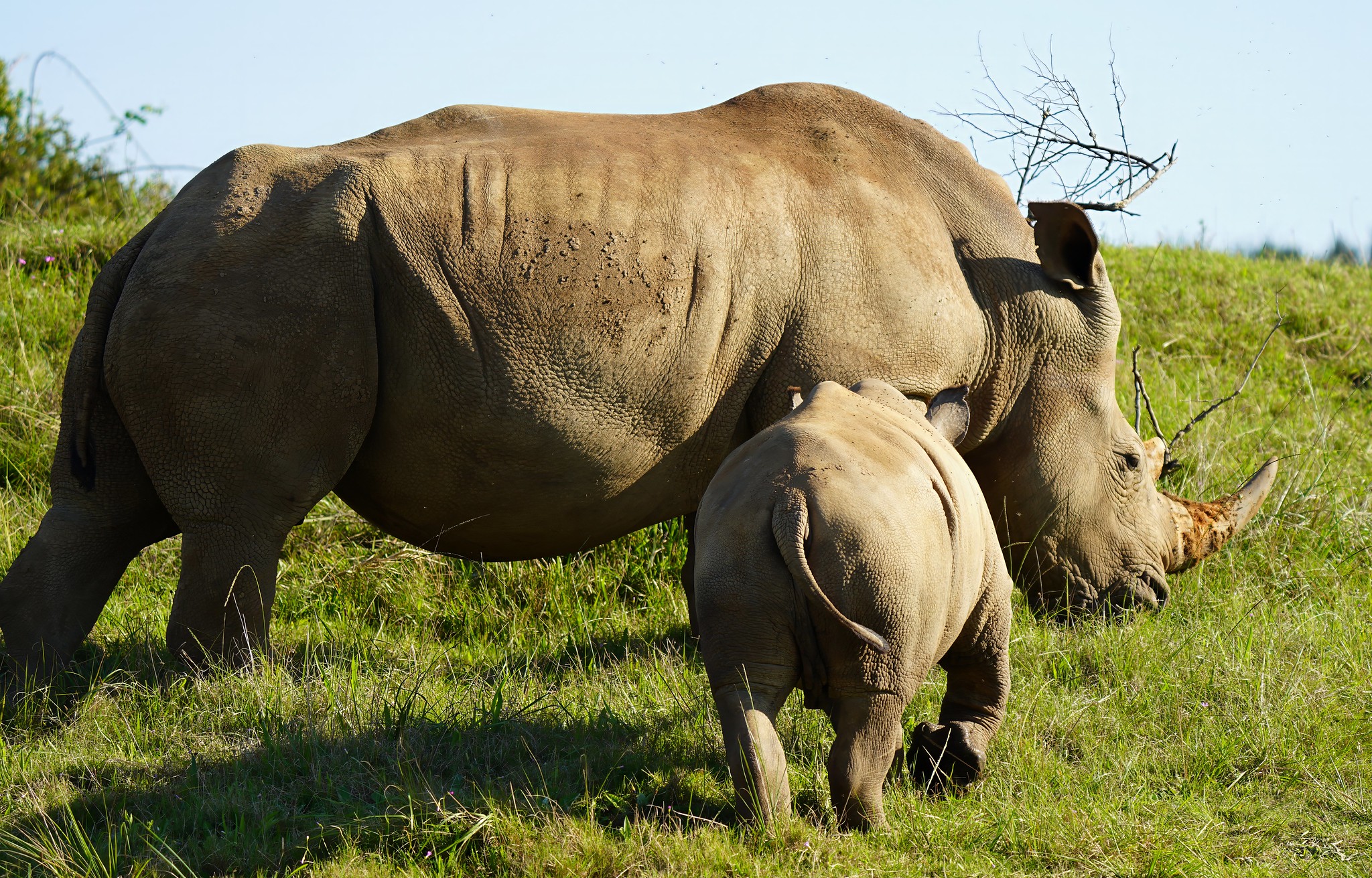12 Fun Facts About Rhinos
Here are 12 Fun Facts About Rhinos. Tanzania is home to some of the world’s most amazing creatures. The rhinoceros has a distinct place among these. Wildlife enthusiasts have fallen in love with rhinos because of their distinctive behaviors and prehistoric appearance.

We’ll learn 12 fun facts about Rhinos in this post that provide insight into the life of these animals and the conservation efforts.
1. There are five species of rhinos.
Rhinoceroses are members of the rhinocerotidae family of mammals. Around the world, rhinos come in five different species. Africa is home to two of these species: the black and white rhinoceroses. The three other rhinoceroses—the Sumatran, Javan, and Indian rhinoceroses—live in different regions of Asia.
2. They have misleading names.
Since both of the primary rhino species in Africa are actually gray, their names can be a little deceptive. The Afrikaans word “wijde,” meaning “wide,” describes the “white” rhino’s broad mouth and is the source of its name. In contrast, black rhinos can hold leaves and twigs from trees and bushes thanks to their hooked upper lip.
3. They Used to Be Giants
With an evolutionary history spanning millions of years, rhinos are a remnant of the primordial era. About 50 million years ago, during the Eocene period, their predecessors inhabited our world. Their unique characteristics are similar to those of ancient megafauna. According to current estimates, Elasmotherium was around the size of a small elephant.
4. The number of large rhinos remains abundant.
Among the biggest terrestrial creatures on the planet are rhinos. They are as heavy as a car! Male white rhinoceroses can weigh up to 5,000 pounds, or roughly 2,300 kilograms, making them the heaviest of all the species. Their short legs and big, robust bodies make them ideal for their homes in the grasslands of Africa. They are herbivores, meaning they get their food from grass, leaves, and fruit.
5. They Do Not Have Bone Horns
The horns of rhinos are one of their most distinguishing characteristics. The snouts of both black and white rhinos have one or two horns. Keratin, the same component that builds up human hair and nails, is used to produce these horns. Unfortunately, rhino numbers have declined as a result of frequent horn hunting.
6. The Rhino skin is similar to armor.
The thick, resilient skin of rhinos resembles armor. This skin serves as a natural defense against the sun and insects. It is so resilient that it may survive in environments with thorns and jagged branches. A layer of fat beneath their thick skin aids in rhinos’ ability to control their body temperature.
7. Their Vision Is Poor
Even though rhinos are incredibly strong and large, their vision is not excellent. They have limited vision, so they may not see you on safari. Nonetheless, their keen senses of hearing and smell enable them to identify any threats.
8. When threatened, rhinos charge.
Despite their seeming composure, rhinos can turn violent when they feel threatened. A rhino may charge at the apparent threat if it feels cornered or provoked. These charges have the potential to travel up to thirty miles per hour!
9. They enjoy rolling in the Mud
Rhinos enjoy cooling off with mud baths on hot days. They coat themselves with a thick layer of mud and roll around in mud puddles. In addition to keeping them cool, this process serves as a natural sunscreen, shielding their skin from the intense African sun.
10. Rhinos Are Able to Communicate Through Their Poo
Rhinoceroses communicate with one another through their feces, or poop. To identify their territory and alert other rhinos of their presence, they leave dung piles in designated spots. Their use of “scat signaling” is crucial to their social relationships and can prevent conflicts.
11. Their lifespan is lengthy.
Depending on their species and habitat, rhinoceroses can live anywhere from 35 to 50 years in the wild. They might even live longer in captivity, where they are protected and cared for. They can contribute to their ecosystems for many years because of their extended longevity.
12. Rhinos Can’t Swim Well
Rhinos are not very good swimmers, despite their size. They’re heavy and not designed for long-distance swimming. If they must cross a river or cool down, they can use their buoyant bodies to stay afloat by wading through shallow water.
Conservation of Rhinos
Poaching and habitat loss pose major dangers to rhinos. Their numbers have drastically decreased due to habitat destruction and illegal trade-driven poaching for their horns.
According to a 2022 assessment, there are currently 22,137 rhinos in Africa, comprising 15,942 white rhinos and 6,195 black rhinos.
More than 10,000 black rhinos lived in Tanzania in the 1960s. By the 1990s, their numbers had tragically decreased to less than 20 rhinos. The globe is home to just two northern white rhinoceroses. There is constant protection for the two ladies in Kenya.
Since then, there have been coordinated conservation initiatives to stop this loss. To combat the illegal trade in rhino goods, these operations take a diverse approach that includes strict anti-poaching measures, community participation, habitat protection, breeding programs, and demand reduction strategies.
The conservation of rhinos is a difficult and continuous task. However, we can all work together to ensure rhinos have a future if governments, organizations, communities, and individuals from all across the world put in significant effort.
Those are the 12 Fun Facts About Rhinos.
Here are a few quick Facts About Rhinos
- Scientific Name: Dicerorhinus sumatrensis, Rhinoceros unicornis, Diceros bicornis, R. sondaicos, Ceratotherium simum
- Common Names: Sumatran, Javan, Indian, Black, and White
- Depending on the species, sizes range from 4 to 15 feet tall and 7 to 15 feet long.
- They usually weigh between 1,000 and 5,000 pounds.
- Duration of life: 10–45 years
- Herbivorous diet
- Habitat: Indian subcontinent, Southeast Asia, and Sub-Saharan Africa
- Status of Conservation: Near Threatened (white), Vulnerable (Indian), and Critically Endangered (Javan, Sumatran, and Black)


















